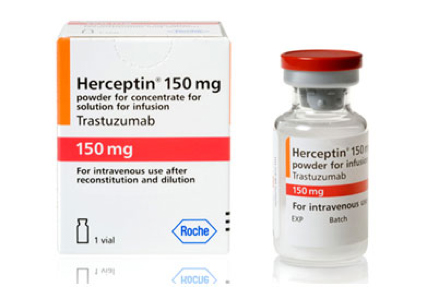When Roche got Herceptin onto China’s national insurance program, it didn’t expect demand to surge so quickly, overwhelming its production capacity there. Now, to cope with a nationwide shortage, it’s shifting to a different manufacturing site to amp up supplies of the
cancer therapy.
Roche applied to change Herceptin's existing production site for China to a higher-capacity plant soon after it received shortage reports and received that approval on May 30, Roche spokesperson Anja von Treskow told TMN . She didn’t specify the locations of those sites.
Von Treskow said it might take time to completely recover Herceptin supplies in the Chinese market, because imported biologics need to pass inspection by the appointed institute of drug control, a process that could take months.
Herceptin—together with three other Roche
cancer drugs, Avastin, Rituxan and Tarceva—was among 36 drugs
added to China’s National Reimbursement Drug List last July. To get on the roster, Roche cut the breast cancer medication's price by about 70% to CNY7,600 ($1,186) per bottle. And because patients only need to pay a small portion of that out of pocket, it means a huge economic relief for them.
Roche is counting on the coverage to help it reach more patients, aiming for volumes that can eventually make up for the huge discount. What it didn’t foresee was the ultrafast uptake.
During an interview last October, Roche Pharmaceuticals China General Manager Hong Chow told TMN almost all provinces had already implemented the insurance switch—in just three months. By contrast, it took about three years to implement the list’s previous update in 2009.
“The much shorter implementation period and significant reduction of patients’ out-of-pocket payments led to rapid increase of demand for Herceptin,” said von Treskow.
Roche then maxed out its production capacity at the plant manufacturing Herceptin for China and tweaked its supply distribution across provinces, but still couldn’t meet the surge in demand.
Last year, China returned CHF1.80 billion ($1.83 billion) in sales for Roche’s pharmaceuticals division, a 6% jump year over year. That was a slowdown from 11% growth for the first half of 2017. Chow said during the October interview that she expected the national insurance scheme listing—and its attendant discount—would cut into sales growth short term, but as more patients use the therapies, volume will grow, benefiting the Swiss pharma in the long run.
The rising demand in China also comes as those Roche cancer stalwarts have started facing biosimilar competition in developed markets in the EU. And the U.S. market will see biosims soon, despite the fact that many drugmakers have had their Herceptin copycats rejected or delayed by the FDA, including a partnership between Amgen and Allergan, Pfizer, Mylan and partner Biocon, and Celltrion and Teva.
